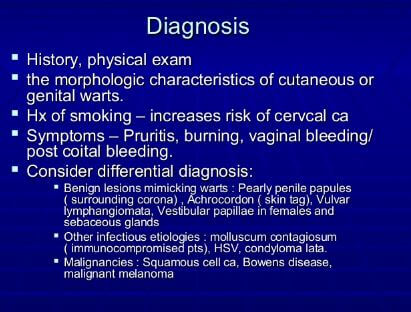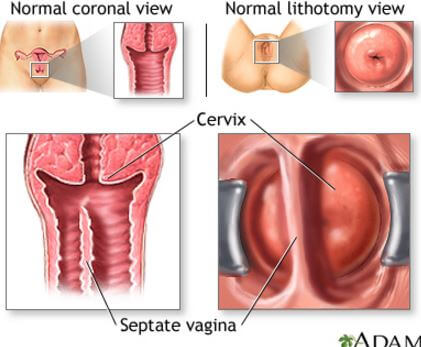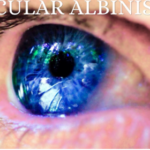Vestibular Papillomatosis
What Is Vestibular Papillomatosis?
Vestibular Papillomatosis is a benign tumor occurring within the vestibule parts of the vulva. It is an atomic variant of the vulva, where one has small finger like projections on the vulva or the vestibule and these are usually pink and fine. Vestibular Papillomatosis presents itself as loosely arranged subdermal tissues with blood vessels and covered with normal mucosal epithelium. The pink or flesh colored projections are usually symmetrical and arranged in order, that’s in linear rows, and are slow growing.

Research has shown that only 1% of the women are affected by this, and it usually affects older women who are in the period between menarche and menopause frequencies. Some experts argue that this is due to the blockage of the sebaceous glands.
This condition can be compared to the pearly penile papules or hirsuites glandis coronae, which are projections found on the corona of the penis. Vestibular papillomatosis is very similar and can be easily confused with genital warts or condyloma acuminatum, which is often caused by human papillomavirus (HPV).
The difference between vestibular papillomatosis and genital warts is that, the bases of the papules in vestibular papillomatosis is separated but in warts there is a filiform projection at the base and they are not limited to the vestibule or the labia minora like the vestibular papillomatosis.
In addition, when you happen to apply 5% of acetic acid (found in vinegar for example) to the lesions in warts, the projections will change color to white but in vestibular papillomatosis, this will remain the same.
Genital warts have a firm texture and have an appearance of pink, red or white in color, where the projections are randomly distributed and take the shape of a cauliflower.
The condition is mild and not contagious. It can neither be transmitted sexually nor is it viral. Other names for vestibular papillomatosis;
- Benign squamous papillomatosis
- Hirsutoid papillomas of the vulvae
- Vulvar squamous papillomatosis
- Hirsuties papillaris vulvae
- Micropapillomatosis labialis
- Squamous vestibular micropapilloma
Symptoms
A person with vestibular papillomatosis may experience various symptoms. Here are some of the symptoms that you may notice:
- Pink projections that are symmetrical and appear in an arranged order and usually grow slowly. Apart from this symptom, most women to do not show signs of other symptoms, however some may have the symptoms stated below.
- Can be accompanied by a burning sensation, some pain and tenderness (may be accompanied by dyspareunia or vulva vestibulitis).
- The vestibule becomes swollen
- Can make have discomforts or pain during sexual intercourse.
- One may have thick and white discharge and the area is itchy. Due to this symptom, the disorder can be easily misdiagnosed as yeast infection.
- Some angiokeratomas can be seen on the labia adjacent to the lesions.
- One may also have a stinging effect on the affected area.
Causes
It should be noted that this condition is not caused by human papillomavirus (HPV), though some researchers suggest that the condition can a risk of further genital HPV infection.
Some experts put it that it is as a result of blockage of the sebaceous glands. Though risks and causes are not clearly known, research is being undertaken to get more information on this.
Diagnosis
Tissue biopsy
A biopsy is done and taken to the laboratory for pathological examination, hence arriving at a definitive diagnosis.

Dermoscopy
This is a tool that is usually used to examine the skin using a special magnifying lens hence can be used to check for the condition.
Wood’s lamp examination
Wood’s lamp examination The doctor can use ultraviolet light to examine the skin and check for changes in pigment.
Acetic acid test
This a test carried out to help the doctor to be able to differentiate whether the patient has vestibular papilloma or genital warts. This is done by applying acetic acid (present in vinegar) to the affected area, to find out how it will react. With genital warts, the projections will turn white but color does not change when it comes to vestibular papillomatosis.
The doctor could also be interested to know the medical and physical history of the patient.
Treatment
Home remedies
It should be noted that some of these remedies may work on some people and others may not but you can find an alternative that works for you. One should also remember to inform the specialists if they are pregnant before being administered with any remedy.
There is no proof that oily substances and chocolate based products have an effect to the condition. Hence, one can apply oils such as castor, tee tree, olive oil, peppermint and eucalyptus to the affected areas, as it helps to relax the papillae hence diminishing their appearance and in some cases disseminating their appearance completely.
Applying these should be 2-3 times a day for two weeks and if there is no difference, look for alternative solutions. In case of any irritation or unfriendly response, stop using the oils.
The patient can also try to apply honey, calamine cream, mild acidic herbs, Epsom salts or dilute lemon juice on the affected area.
One can keep themselves clean to avoid worsening of the condition, though this disorder is not caused by body dirt. Having a warm bath of baking soda has a soothing effect, and it’s thus recommended.
You can also apply some topical solutions such as estrogen cream, podofilox and podophyllin to the affected area to bring relieve. This should however, be as guided by the doctor.
Avoid soaps that have strong chemicals to prevent irritation or worsening of the situation.
Medical treatment
Before treatment, the a doctor will advise the patient to watch the condition first and if it is bothersome and necessary, then they can proceed with the treatment. The doctor can also give acidic treatments that are to be used continuously so as to burn the papules until they disappear. This may cause some mild discomfort to the patient.
The doctor can also inject the patient with interferon which helps in improvement of dyspareunia
Surgery
Laser or simple surgery can be done to remove the vestibular papillae, though it may not really be necessary. It should be done when all medical treatments have failed. Pregnant women should not undergo this procedure.

Reference List
- https://pearlybumps.com/vestibular-papillomatosis-home-remedies/
- Vestibular papillomatosis. Available at: www.ijdvl.com
- Diagnosis of vestibular papillomatosis. Available at: www.dovemed.com/disease-conditions/vestibular-papillomatosis-vulva/
- Vestibular papillomatosis. Available at https://en.wikipedia.org/wiki/Vestibular_papillomatosis











